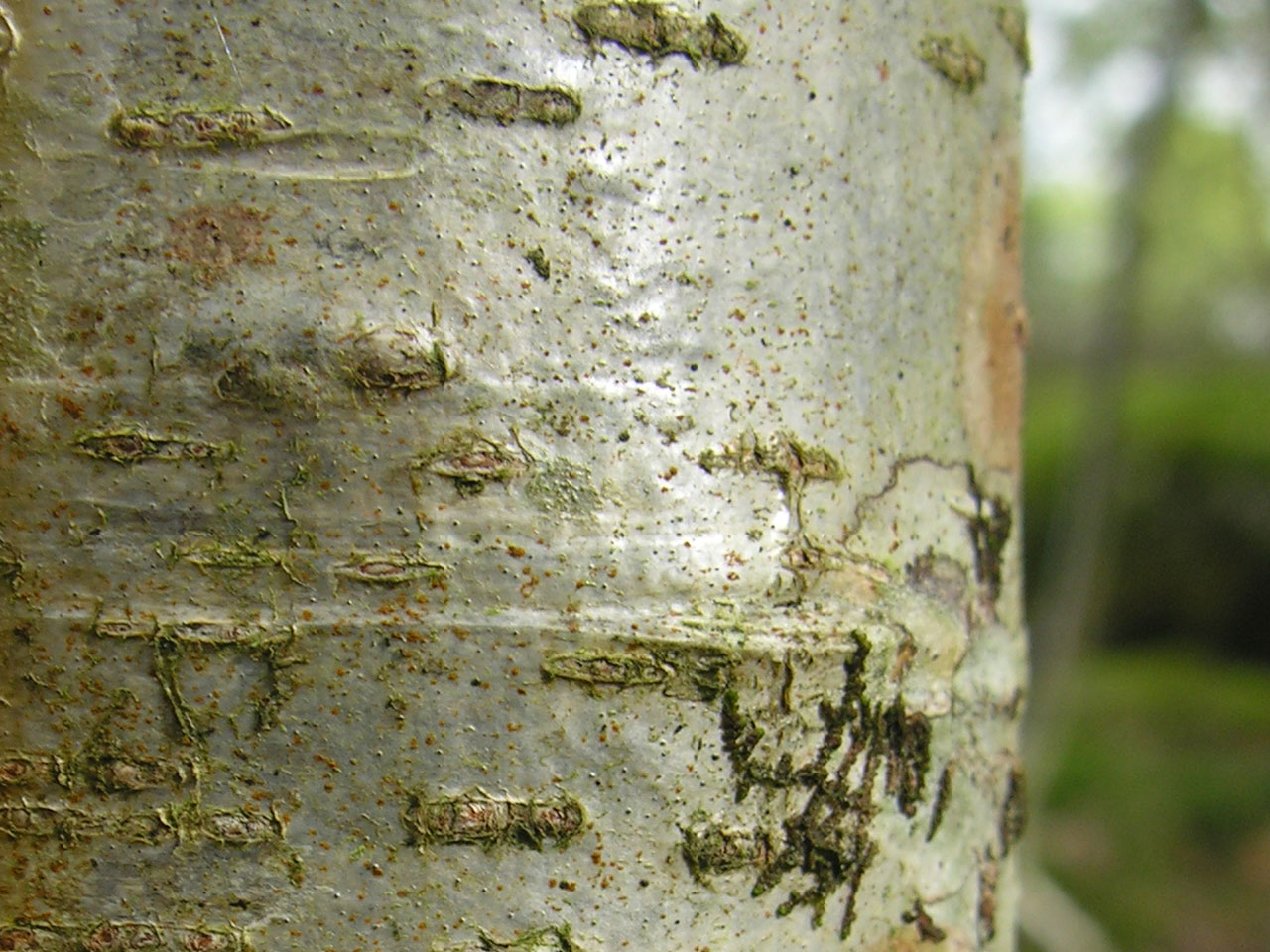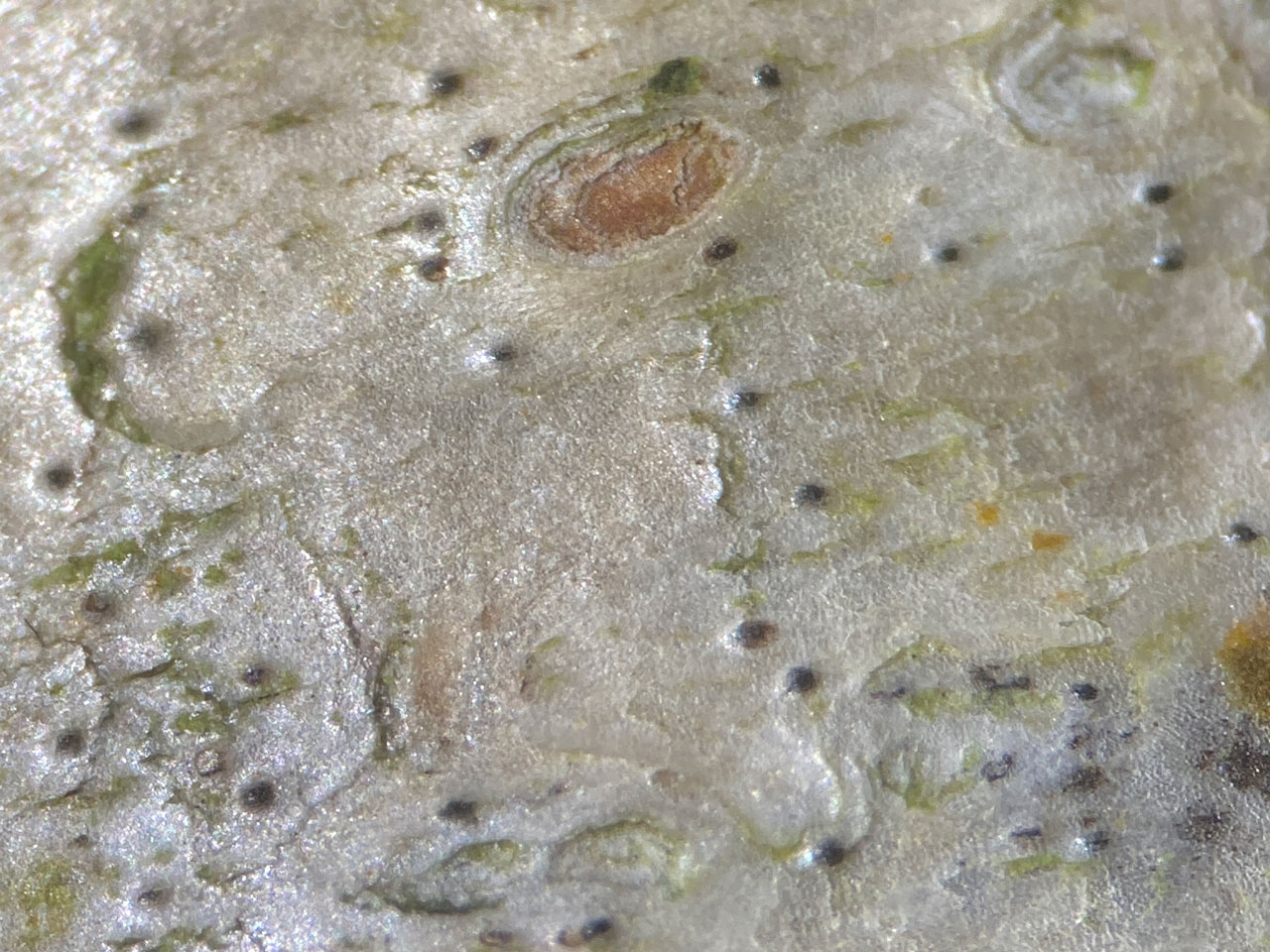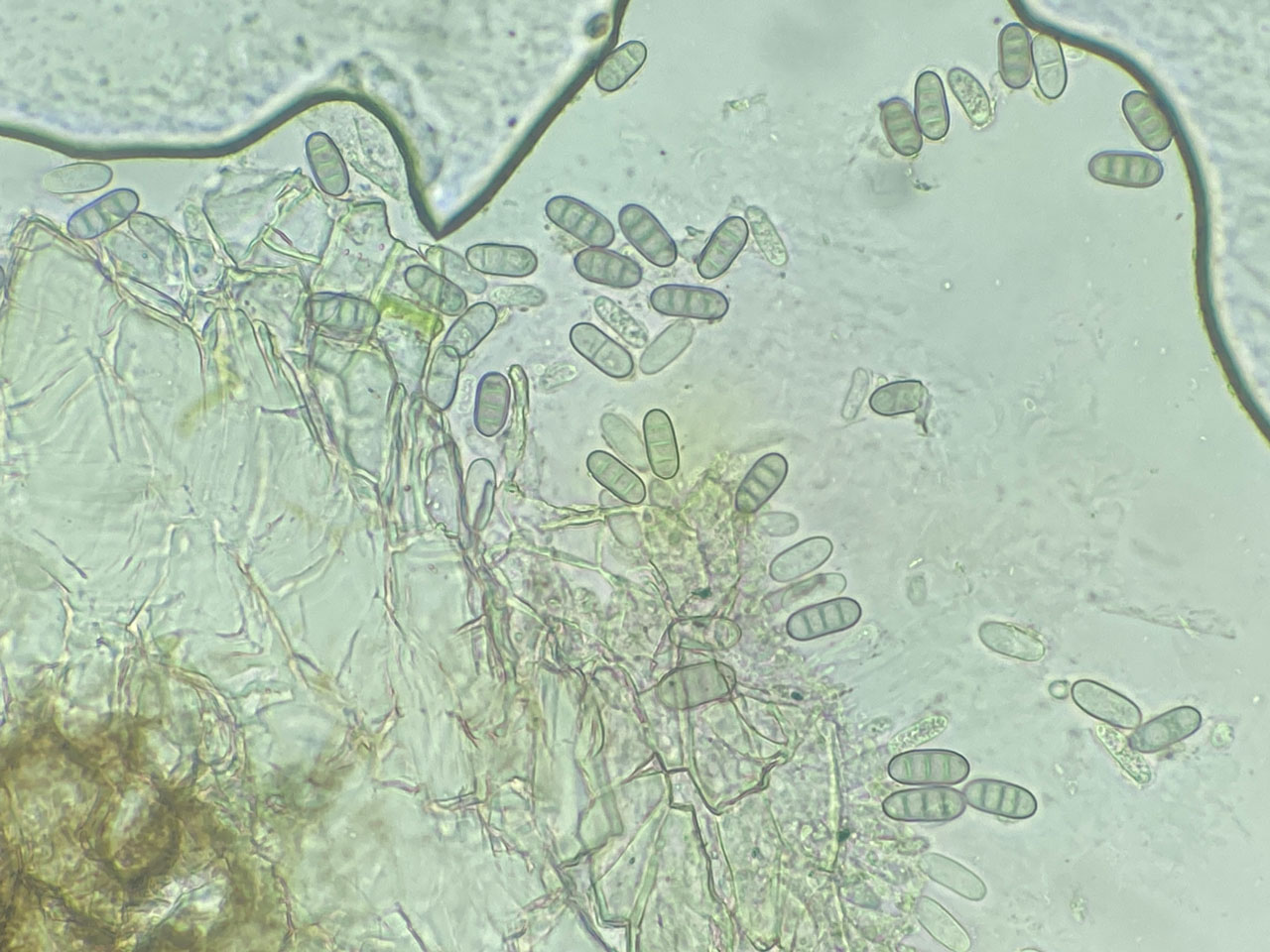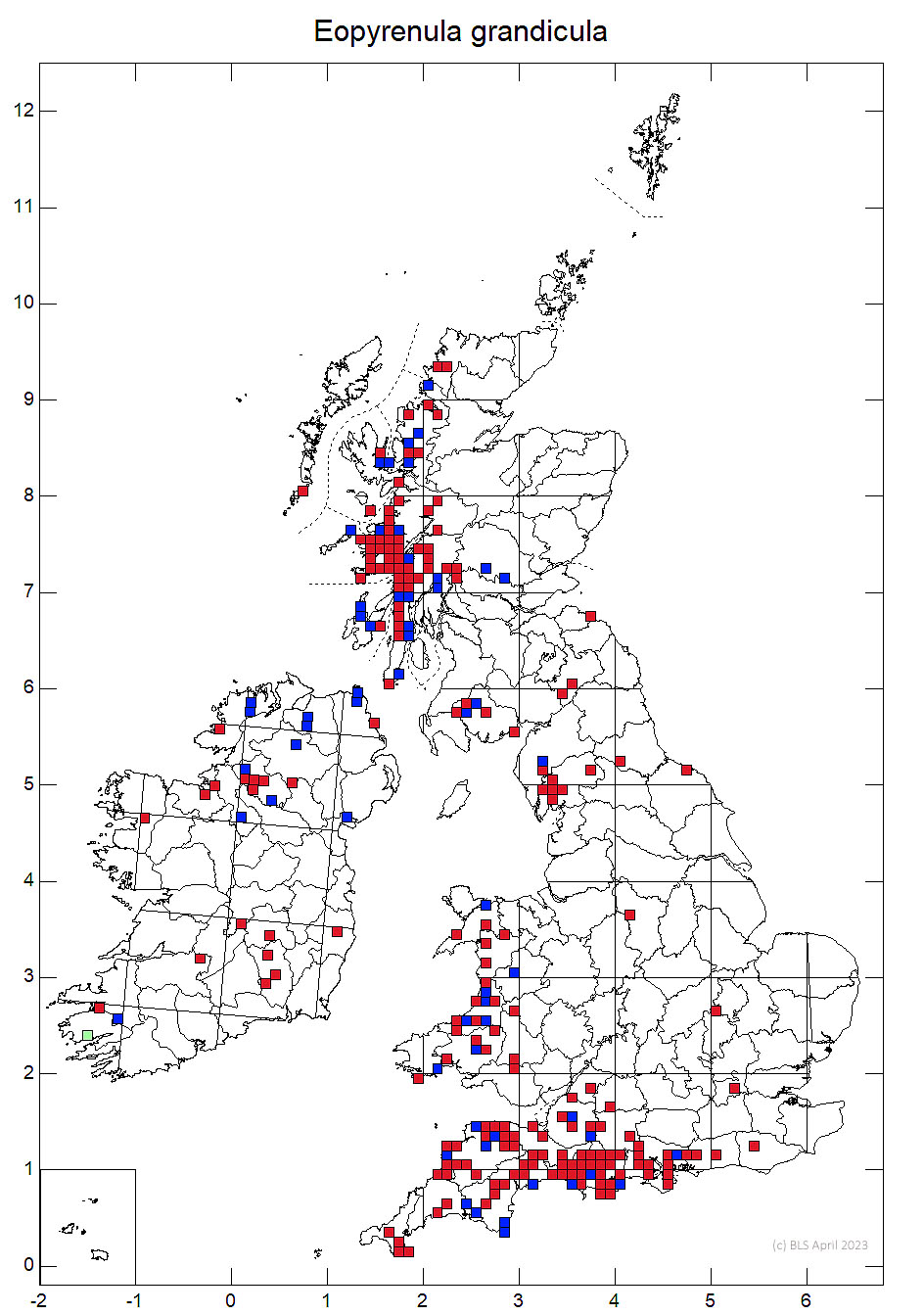Eopyrenula grandicula
A tiny "black dot" found as a pioneer mainly on young Hazel stems on old Hazel bushes in woodland, including abandoned coppices. Generally western, but recently found in eastern England and Scotland so may be spreading. Anisomeridium viridescens looks similar but is easily separated microscopically. Usually lacking perithecia, but the pycnidia contain very distinctive 3-septate and pale brown macroconidia, which are larger than those of Eopyrenula avellanae.
Thallus usually causing a whitening or silvering of the bark. Perithecia similar to Eopyrenula avellanae, but usually absent; ascospores 3-septate, (12–) 14–19 (–22) × 6–7.5 µm. Macroconidia 3-septate, brown, (13–) 14–19 (–21) × 6–7.5 µm
Although much more common than the closely related E. avellanae, E. grandicula has been found only rarely with mature perithecia. However, it is easily identified by its brown, 4-locular macroconidia, which are larger than those of E. avellanae.
On smooth bark of Hazel, also Holly and Rowan, as well as on plateaus of fissured bark of Ash, Plane Tree and Oak; usually in old woodland; often common in high rainfall areas. Also currently colonising formerly coppiced Hazel in abandoned coppices in lowland England, but apparently more slowly than Anisomeridium viridescens.

Local, S.W. England, Wales, N. England, W. Scotland (and further east in Mid-Perthshire), throughout Ireland. Rare but possibly spreading in the south and east of England.
Probably recovering and spreading with the decline in Hazel coppicing
Britain: Notable & International Responsibility species
Scotland: Priority Taxon for Biodiversity in Scotland
Cannon, P., Coppins, B., Aptroot, A., Sanderson, A. & Simkin, J. (2023). Perithecial genera I, including Acrocordia, Alloarthopyrenia, Anisomeridium, Antennulariella, Arthopyrenia, Celothelium, Cyrtidula, Dichoporis, Eopyrenula, Julella, Leptorhaphis, Leptosillia, Lithothelium, Mycomicrothelia, Mycoporum, Naetrocymbe, Pyrenula, Rhaphidicyrtis, Sarcopyrenia, Swinscowia and Tomasellia. Revisions of British and Irish Lichens 37: 1-59.
Text by Neil A Sanderson based on Cannon et al (2023)



